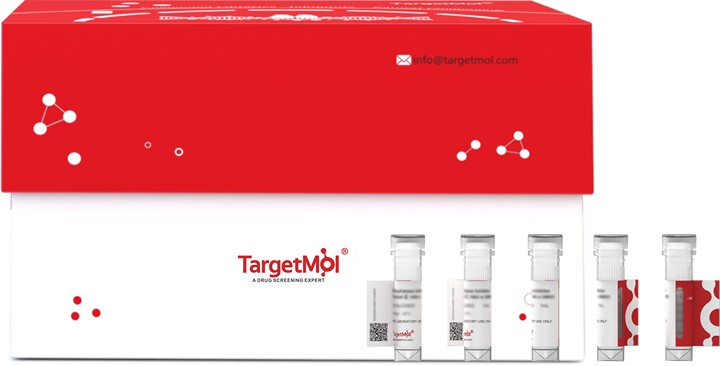购物车
- 全部删除
 您的购物车当前为空
您的购物车当前为空

Rubella virus (strain RN-UK86) Structural polyprotein (His & SUMO) is expressed in E. coli expression system with N-6xHis-SUMO tag. The predicted molecular weight is 37.8 kDa and the accession number is Q8VA10.

| 规格 | 价格 | 库存 | 数量 |
|---|---|---|---|
| 20 μg | ¥ 2,290 | 20日内发货 | |
| 100 μg | ¥ 4,750 | 20日内发货 | |
| 1 mg | ¥ 16,000 | 20日内发货 |
| 生物活性 | Activity has not been tested. It is theoretically active, but we cannot guarantee it. If you require protein activity, we recommend choosing the eukaryotic expression version first. |
| 产品描述 | Rubella virus (strain RN-UK86) Structural polyprotein (His & SUMO) is expressed in E. coli expression system with N-6xHis-SUMO tag. The predicted molecular weight is 37.8 kDa and the accession number is Q8VA10. |
| 种属 | RUBV |
| 表达系统 | E. coli |
| 标签 | N-6xHis-SUMO |
| 蛋白编号 | Q8VA10 |
| 别名 | Structural polyprotein,p110 |
| 氨基酸序列 | GLQPRADMAAPPAPPQPPCAHGQHYGHHHHQLPFLGHDGHHGGTLRVGQHHRNASDVLPGHCLQGGWGCYNLSDWHQGTHVCHTKHMDFWCVEHDRPPPATPTPLTTAANSTTAATPATAPAPCHAGLNDSCGGFLSGCGPMRLRHGADTRCGRLICGLSTTAQYPPTRFACAMRWGLPPWELVVLTARPEDGWTCRGVPAHPGTRCPELVSPMGRATCSPASALWLATANALS |
| 蛋白构建 | 301-534 aa |
| 蛋白纯度 | > 85% as determined by SDS-PAGE. |
| 分子量 | 37.8 kDa (predicted) |
| 内毒素 | < 1.0 EU/μg of the protein as determined by the LAL method. |
| 缓冲液 | If the delivery form is liquid, the default storage buffer is Tris/PBS-based buffer, 5%-50% glycerol. If the delivery form is lyophilized powder, the buffer before lyophilization is Tris/PBS-based buffer, 6% Trehalose, pH 8.0. |
| 复溶方法 | Reconstitute the lyophilized protein in sterile deionized water. The product concentration should not be less than 100 μg/mL. Before opening, centrifuge the tube to collect powder at the bottom. After adding the reconstitution buffer, avoid vortexing or pipetting for mixing. |
| 存储 | Lyophilized powders can be stably stored for over 12 months, while liquid products can be stored for 6-12 months at -80°C. For reconstituted protein solutions, the solution can be stored at -20°C to -80°C for at least 3 months. Please avoid multiple freeze-thaw cycles and store products in aliquots. |
| 运输方式 | In general, Lyophilized powders are shipping with blue ice. Solutions are shipping with dry ice. |
| 研究背景 | Capsid protein interacts with genomic RNA and assembles into icosahedric core particles 65-70 nm in diameter. The resulting nucleocapsid eventually associates with the cytoplasmic domain of E2 at the cell membrane, leading to budding and formation of mature virions from host Golgi membranes. Phosphorylation negatively regulates RNA-binding activity, possibly delaying virion assembly during the viral replication phase. Capsid protein dimerizes and becomes disulfide-linked in the virion. Modulates genomic RNA replication. Modulates subgenomic RNA synthesis by interacting with human C1QBP/SF2P32. Induces both perinuclear clustering of mitochondria and the formation of electron-dense intermitochondrial plaques, both hallmarks of rubella virus infected cells. Induces apoptosis when expressed in transfected cells.; Responsible for viral attachment to target host cell, by binding to the cell receptor. Its transport to the plasma membrane depends on interaction with E1 protein. The surface glycoproteins display an irregular helical organization and a pseudo-tetrameric inner nucleocapsid arrangement.; Class II viral fusion protein. Fusion activity is inactive as long as E1 is bound to E2 in mature virion. After virus attachment to target cell and clathrin-mediated endocytosis, acidification of the endosome would induce dissociation of E1/E2 heterodimer and concomitant trimerization of the E1 subunits. This E1 homotrimer is fusion active, and promotes release of viral nucleocapsid in cytoplasm after endosome and viral membrane fusion. The cytoplasmic tail of spike glycoprotein E1 modulates virus release. The surface glycoproteins display an irregular helical organization and a pseudo-tetrameric inner nucleocapsid arrangement. |